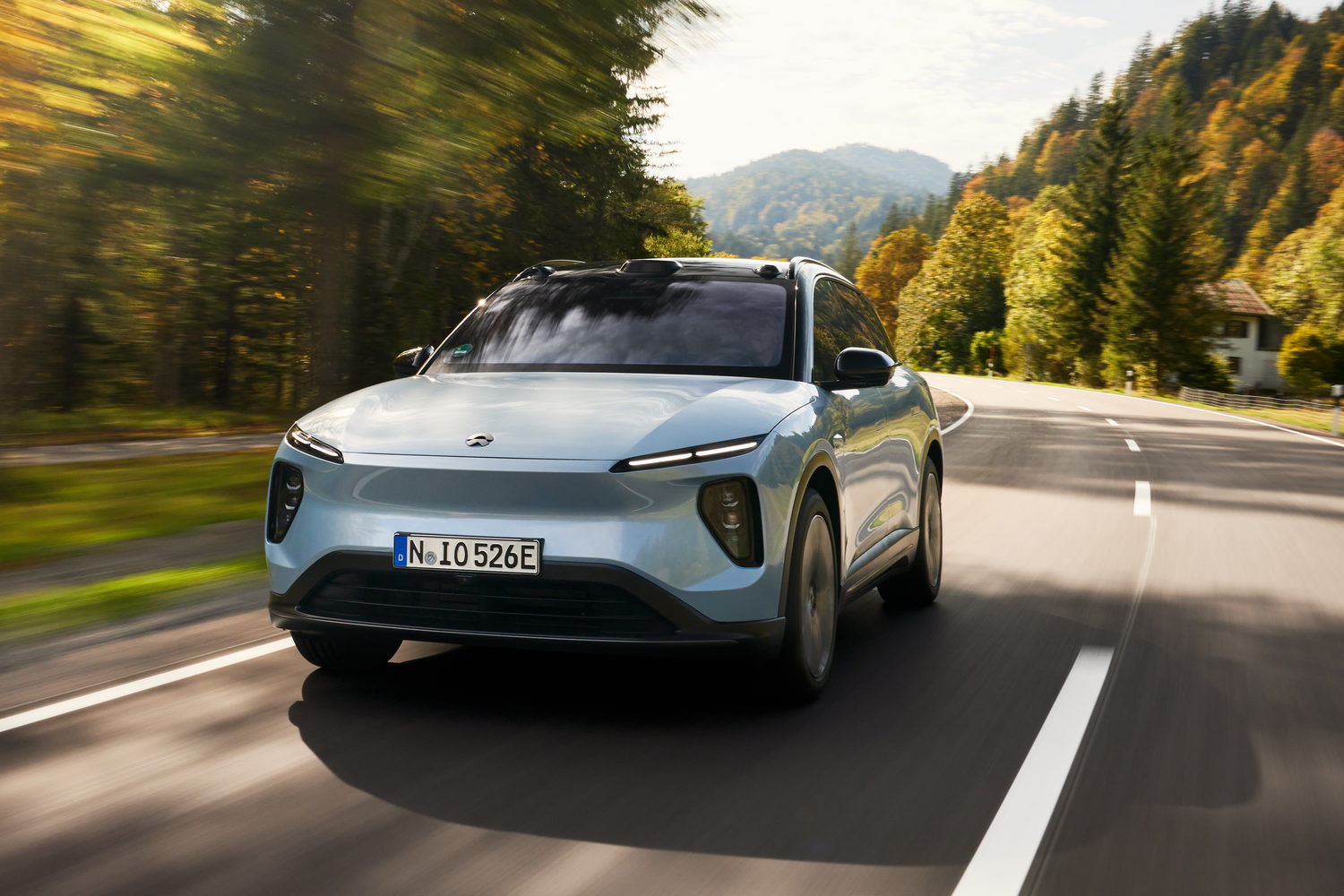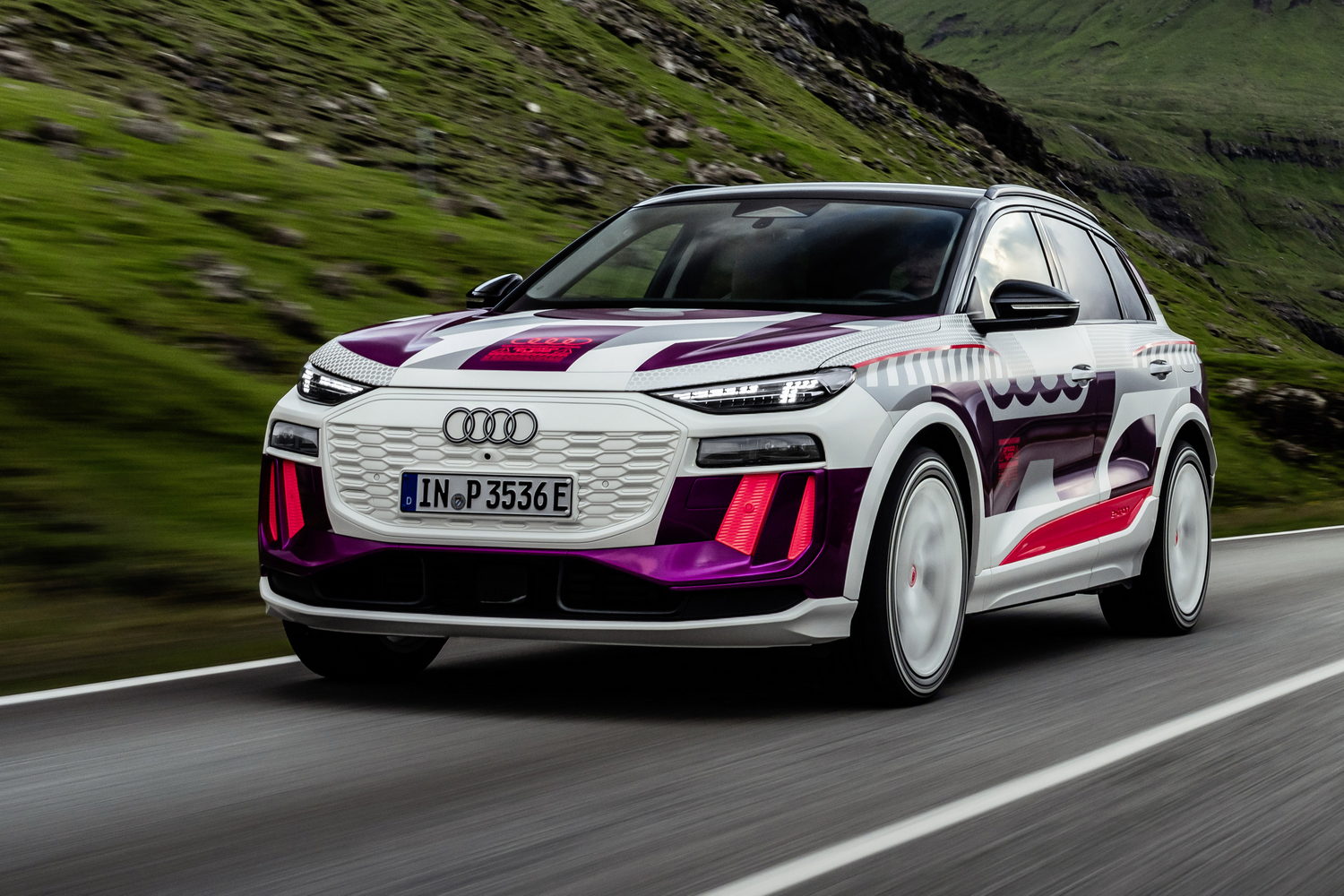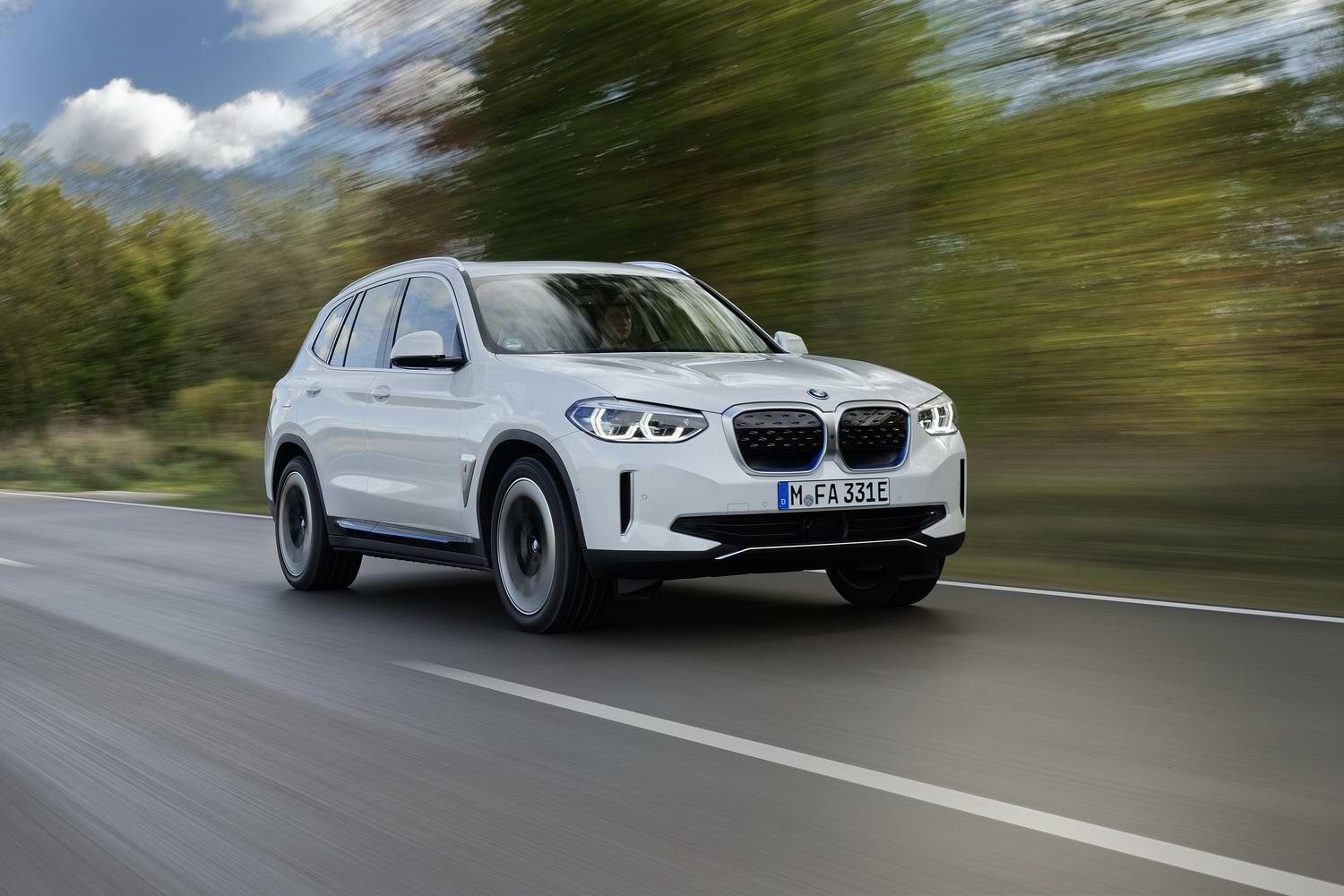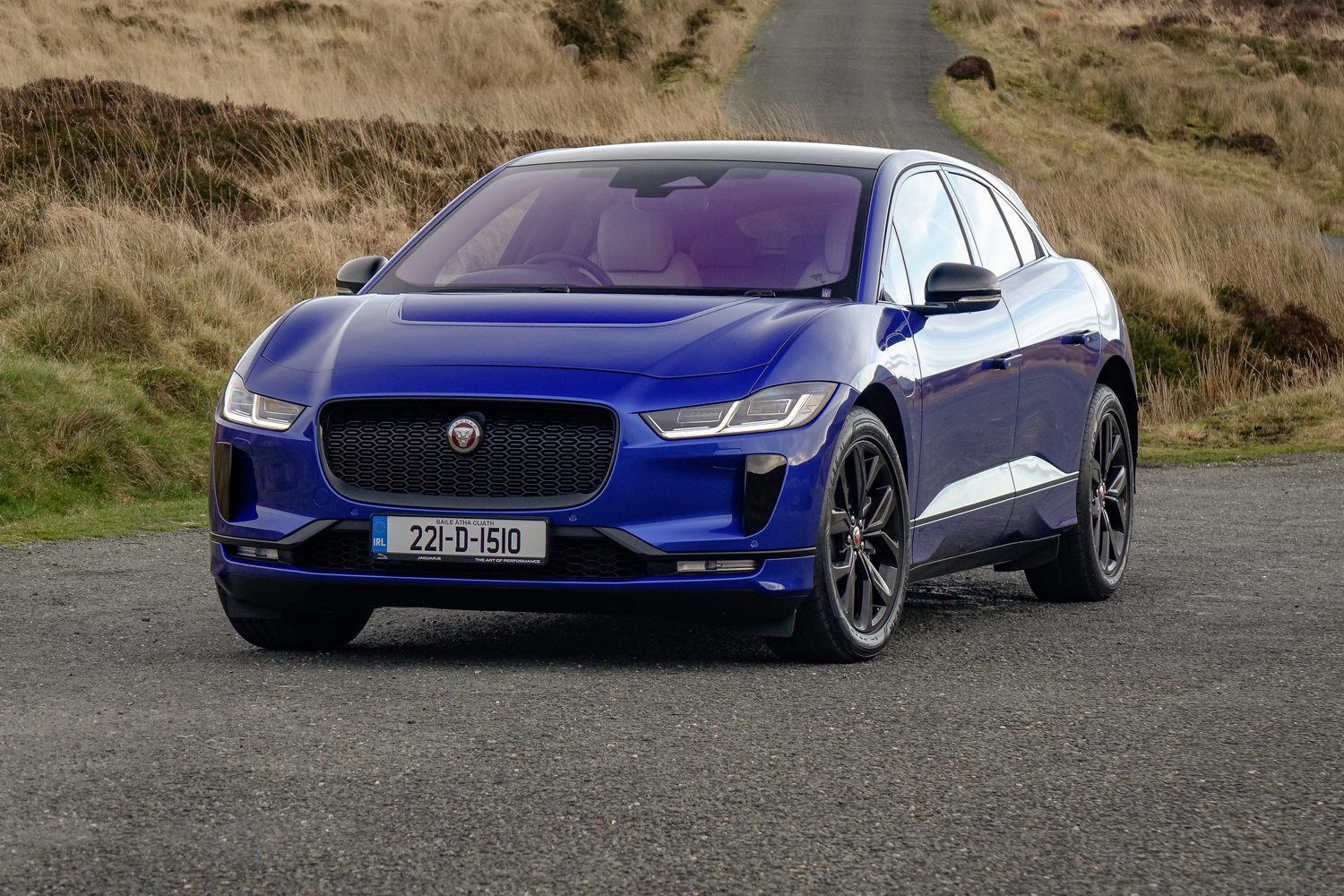If you haven't heard of Nio, you aren't alone. The Chinese electric car maker has no official presence in Ireland yet. However, the company has begun its expansion into Europe, and it will venture into right-hand-drive markets in the not-too-distant future. One of the cars to spearhead that will be the new EL6 SUV, which is here to rival the forthcoming Audi Q6 e-tron and others. But can the newcomer compete in such esteemed company?
In the metal
Nio's design house is in Munich, so it's no surprise that the EL6 has a bit of a European flavour to its styling. Smooth, clean lines make it feel modern and smart, and they make the car relatively aerodynamic for a mid-size SUV, but there's a sizeable fly in the ointment. Although the European designers' natural instinct was to incorporate the safety system sensors into the car's bodywork, Nio's CEO was keen to show off the abundance of technology, and so the 'taxi light' on the roof has remained, along with two nodules either side. To our eyes, it looks a bit like the aliens from Toy Story.
Except, of course, the EL6 is way too big to be picked up by the claw in one of those funfair machines. The size is partly dictated by Nio's unique selling point: battery swapping.
The idea is that customers will rock up to a kind of garage location, drive in and have the battery swapped with a fully-charged replacement. The process takes a matter of minutes, and it's a supplement to conventional battery charging, which is also available. And don't think this is science fiction; Nio already has about 30 of these battery swapping stations in Europe, and almost 2,000 worldwide.
Anyway, the demands of the battery swapping mean unlike some cars, the Nio's battery isn't structural. Otherwise the car would collapse when the battery was removed. That extra structure means it's a heavy car, and it's big. Although it rivals the BMW iX3, it's a little longer than the electric X3, and it's wider, too. While that may have its advantages when it comes to interior space, it does look and feel bulky on the road.
Still, cabin capacity is quite impressive, with ample elbow room in the front and rear, and plenty of legroom in the back. The Chinese market places great importance on rear cabin space. Boot space is rather good on paper, too, although it doesn't feel as roomy as the 668-litre official capacity makes it sound. And when the rear seats are folded, the 1,430-litre total capacity is a bit on the small side.
That said, the EL6 is an incredibly comfortable place to be, particularly if you opt for the pale interior colours, which add to the sense of light and space. The materials are great, too, with soft upholstery and impressive quality, which is easily the equal of established premium brands such as Polestar and Mercedes-Benz.
But as technology had to influence the exterior design of the exterior, it's no surprise that technology is the most important feature of the cabin. Most prominent is the massive central touchscreen, which is a clear copy of Tesla's system, albeit with a few tweaks. In fairness, the system works pretty well, but it has to because there's no Android Auto or Apple CarPlay smartphone integration system to help it out. Instead, Nio wants to keep its drivers using the proprietary tech, although Google Places technology and Spotify are both integrated into the system to limit the need for smartphone integration. There is Bluetooth, however, to facilitate phone calls and media access.
More importantly, Nio has fitted its digital assistant called Nomi. Available in a choice of two different forms, it can either work as a voice-controlled system not dissimilar to Alexa or Siri, or it can come with a kind of digital face with which you can interact. Either way, the system allows drivers to control various features, including assistance technology, media and navigation systems using voice commands. At least that's the idea.
On our test, the system showed almost total disobedience, failing miserably to understand the majority of commands, and only occasionally functioning roughly as advertised. What's more, the more upmarket system, with the robot head that turns to look at whoever's talking to it, is a bit disconcerting not just because the 'cute' digital 'face' follows you awkwardly, but because the motor that powers it is quite noisy. Nio says the system will be developed further before the car is launched in right-hand-drive form, but for the moment, it isn't ready.
On the plus side, continuous over-the-air updates (Nio has released around one a month for its range of five cars over the past few years) mean advances can be introduced at a rapid rate. And many missteps can be rectified at pace. Updates come in two forms, with small updates operating a little like app updates for a smartphone, while larger updates require a restart - a little more like operating system updates.
Driving it
Just as the dimensions are partly determined by the battery swap technology, so too is the powertrain. Customers get a choice of two battery packs, with a 75kWh unit as standard and a 100kWh battery as an option. But whichever one you pick, you get a pair of electric motors, with a 150kW motor at the front and a 210kW motor at the rear. But there's more that separates them than just the car's wheelbase and the power outputs. They're actually different kinds of motor, which means the front motor can be disconnected when the power and traction is not needed, allowing the car to drive more efficiently on just the rear motor.
When both motors work together, the car gets 490hp and all-wheel drive, allowing it to get from 0-100km/h in around four-and-a-half seconds. It's commendable performance, and the all-wheel drive gives the car a bit of off-road capability, too. The EL6 comes with a range of driving modes to suit either the road conditions or the terrain, depending on the driver's needs. There's a Sport+ setting that gives the car maximum power, a Sport setting that provides more of a balance between power and economy, and there's a default Comfort setting for a softer ride. There's also an Eco setting for maximum range, and a selection of off-road modes for snow and ice, sand and wet weather.
But if you use the Eco setting, Nio says the car will cover 529km on a single charge, assuming you choose the 100kWh battery. Opt for the smaller battery and that falls to just over 400km, although our test suggested those ranges would be achievable in the real world, assuming you don't stick to motorway driving and you drive carefully. Certainly, our 100kWh test achieved the sort of energy consumption that would equate to a 500km range on country and urban roads, and around 400km on the motorway.
That's particularly useful because the charging rates are adequate, rather than impressive. The 75kWh battery will charge at speeds of up to around 140kW, which is pretty speedy, but it's only enough for a 10-80-per-cent charge in about 40 minutes. The 100kWh battery, on the other hand, takes around 30 minutes to achieve the same feat thanks to its maximum charge speed of between 175- and 180kW. Charge at home using a 7kW wallbox and it'll take eight hours to fully recharge the 75kWh battery or 12 hours for the 100kWh unit. But given the option of battery swapping, the charging speeds aren't such an issue as they might otherwise be.
And there's more to electric cars than just speed or range, even though the Nio clearly has both in abundance. The motors are whisper quiet, as you might expect, and the cabin isolates its occupants from the outside world remarkably effectively. There's a bit of road noise on some surfaces, but generally it's near-silent.
It drives pretty well, too, with software-controlled suspension that alters the response depending on the surface and the driving mode. The result is pretty impressive, and the EL6 soaks up any imperfections in the road with relative ease. That said, our test took place on the roads of southern Germany and northern Austria, which are as unwrinkled as an infant's back side, and usually show cars in their best light. Even so, it's clear the car is pretty well sorted in terms of comfort.
The handling isn't bad either, although it's clear that comfort is the focus. The steering feels numb, inert and slightly disconnected at times, as though you're controlling the car through a gaming wheel, rather than the real thing. That, combined with the car's width makes narrow gaps 'entertaining' at times, but the EL6 has reasonable control of its big body, and that means it doesn't lurch around from corner to corner, although it does lean a little. The brakes are powerful, too, and they're generally good at getting the big SUV stopped. Sometimes, though, they're a little too good, feeling sharp and grabby at low speeds.
What you get for your money
Nio has not announced any plans to put the EL6 or any of its cars on sale in Ireland in the near future, but the company will come to the UK in the next year or so, with further expansion into the Irish market expected in the long-term. As a result, prices are yet to be confirmed for right-hand-drive cars, but in other markets, the EL6 costs roughly the same money as rivals such as the BMW iX3, which starts at under €80,000 at the time of writing.
Summary
Without pricing information, or even a presence in Ireland as yet, it's hard to draw solid conclusions on the Nio EL6, but the early signs are very promising indeed. A solid driving experience, a seemingly comfortable ride and a classy, spacious cabin are all in its favour, as is the continuously evolving interior technology and the removable battery system. It isn't perfect, but the EL6 is a viable alternative to the established premium models, and both it and Nio have plenty of promise.


































